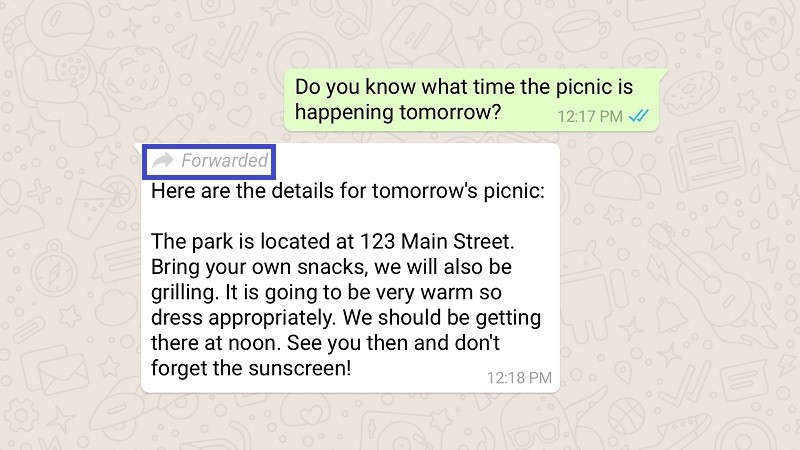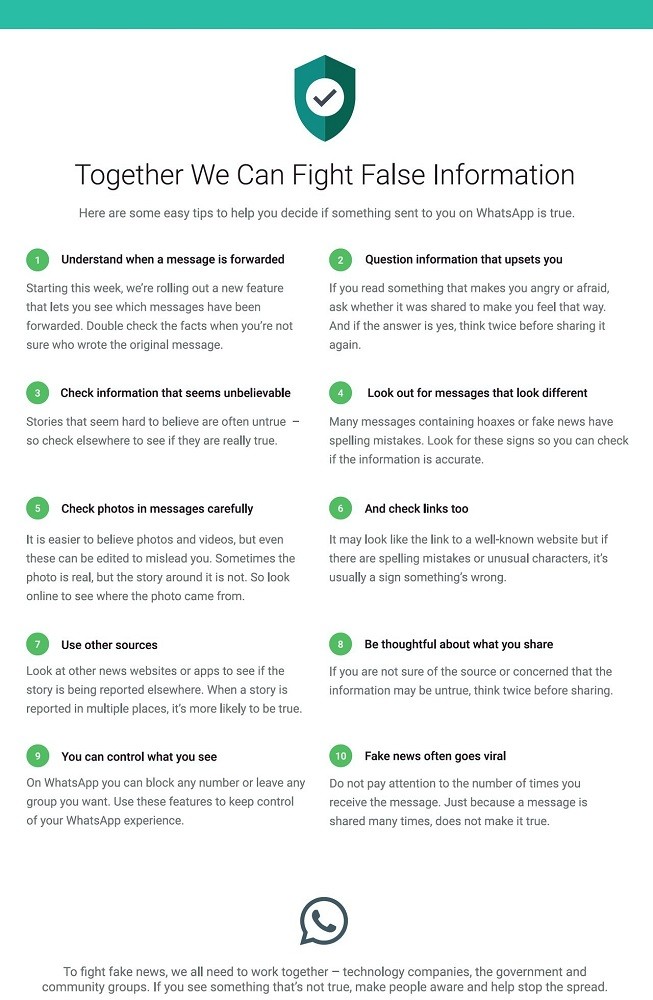Facebook-owned WhatsApp recently made headlines in India for being called-out by the Indian government to address the issue of fake news and misinformation being spread through its platform that has led to violence and deaths of innocent people in the country. In response, WhatsApp said that “false news, misinformation and the spread of hoaxes are issues best tackled collectively: by government, civil society and technology companies working together”. WhatsApp even published full-page advertisements in the country’s newspapers to educate people on how to spot fake information. Well, continuing its fight against the spread of fake news and misinformation, WhatsApp has announced that it will be labeling messages as “Forwarded”.

Starting today, if someone forwards a message, it will be labeled as “Forwarded”. This label will appear at the top of the message. The label will appear in both one-on-one chats as well as group chats. This should help people identify that the message they receive in one-on-chats and group chats are forwarded.
WhatsApp has been testing this feature since March, and, it was even rolled out to Android users on beta version 2.18.179 of WhatsApp. But now, it’s finally rolling out to all the users across the world.
“Starting today, WhatsApp will indicate which messages you receive have been forwarded to you. This extra context will help make one-on-one and group chats easier to follow. It also helps you determine if your friend or relative wrote the message they sent or if it originally came from someone else. To see this new forwarded label, you need to have the latest supported version of WhatsApp on your phone.” said WhatsApp in a blog post.
Well, even if WhatsApp is now labeling forwarded messages as… well.. “Forwarded”, people can still get rid of that label by simply copy-pasting the message and sending it in one-on-one chats and group chats. As far as non-textual messages containing photos and videos are concerned, a user can simply upload that photo/video from the phone storage and send it in a chat, thus preventing it from getting labeled as “Forwarded”.

So yes, this isn’t a foolproof way to tackle the issues of fake news and misinformation spreading through WhatsApp, but it’s certainly a step in the direction by WhatsApp to curb this menace. After all, no matter how much technology you put to work, it all depends on how well it’s used by the people having access to it. This also means that we agree with WhatsApp saying “false news, misinformation and the spread of hoaxes are issues best tackled collectively: by government, civil society and technology companies working together”.
Having said that, WhatsApp has also started testing a feature called ‘Suspicious Link Detection‘, which as the name suggests, helps users recognize whether a link that’s shared with them is suspicious or trustworthy. However, we don’t see it rolling out to all the users just yet. It could take WhatsApp a month or two to roll it out to all its users.
